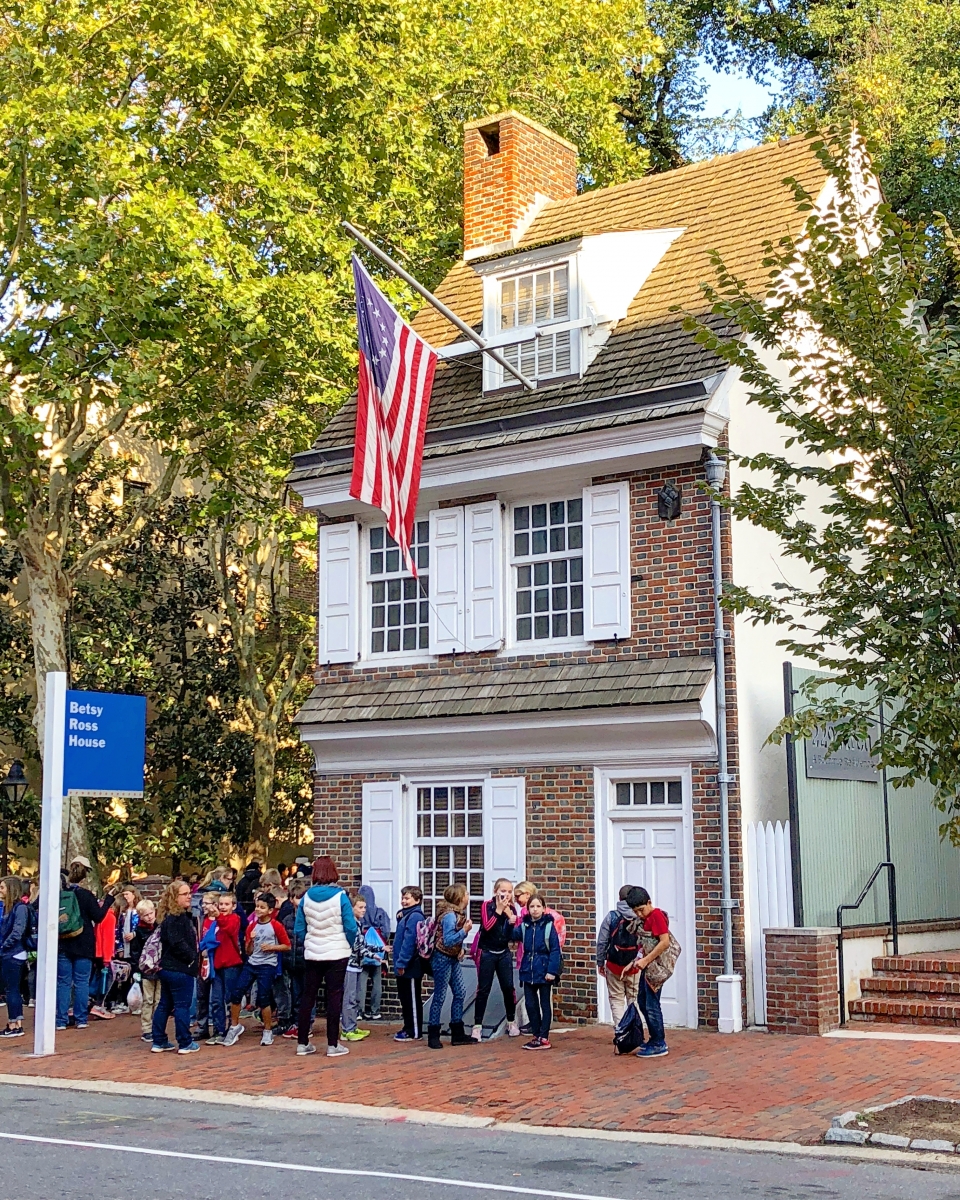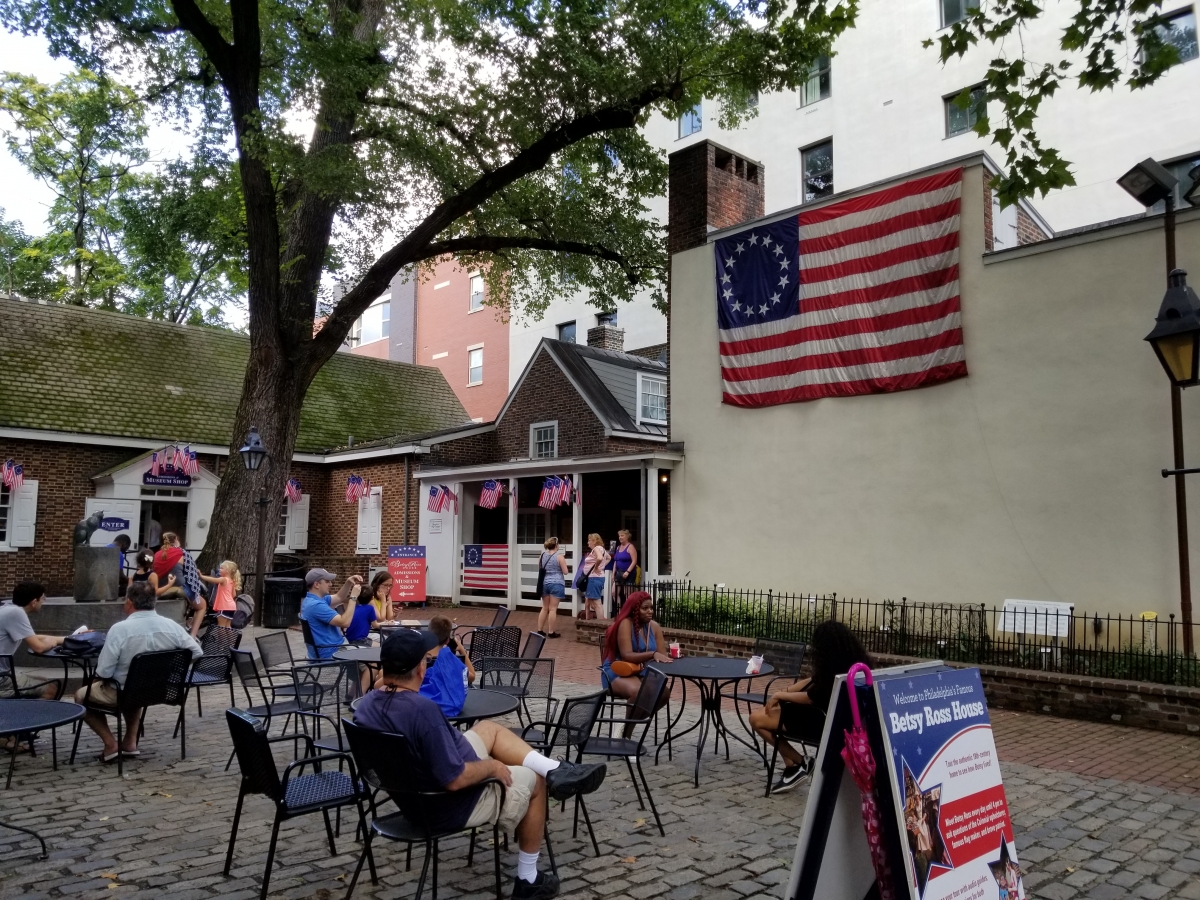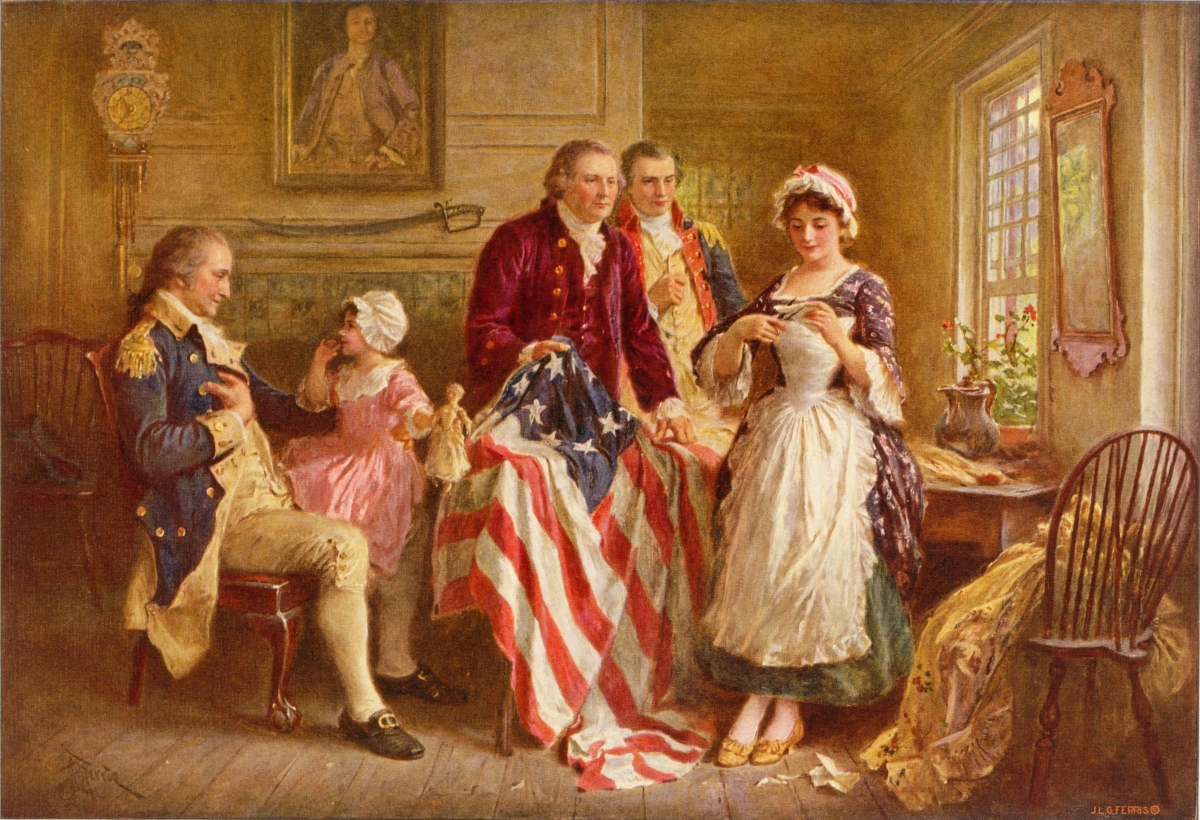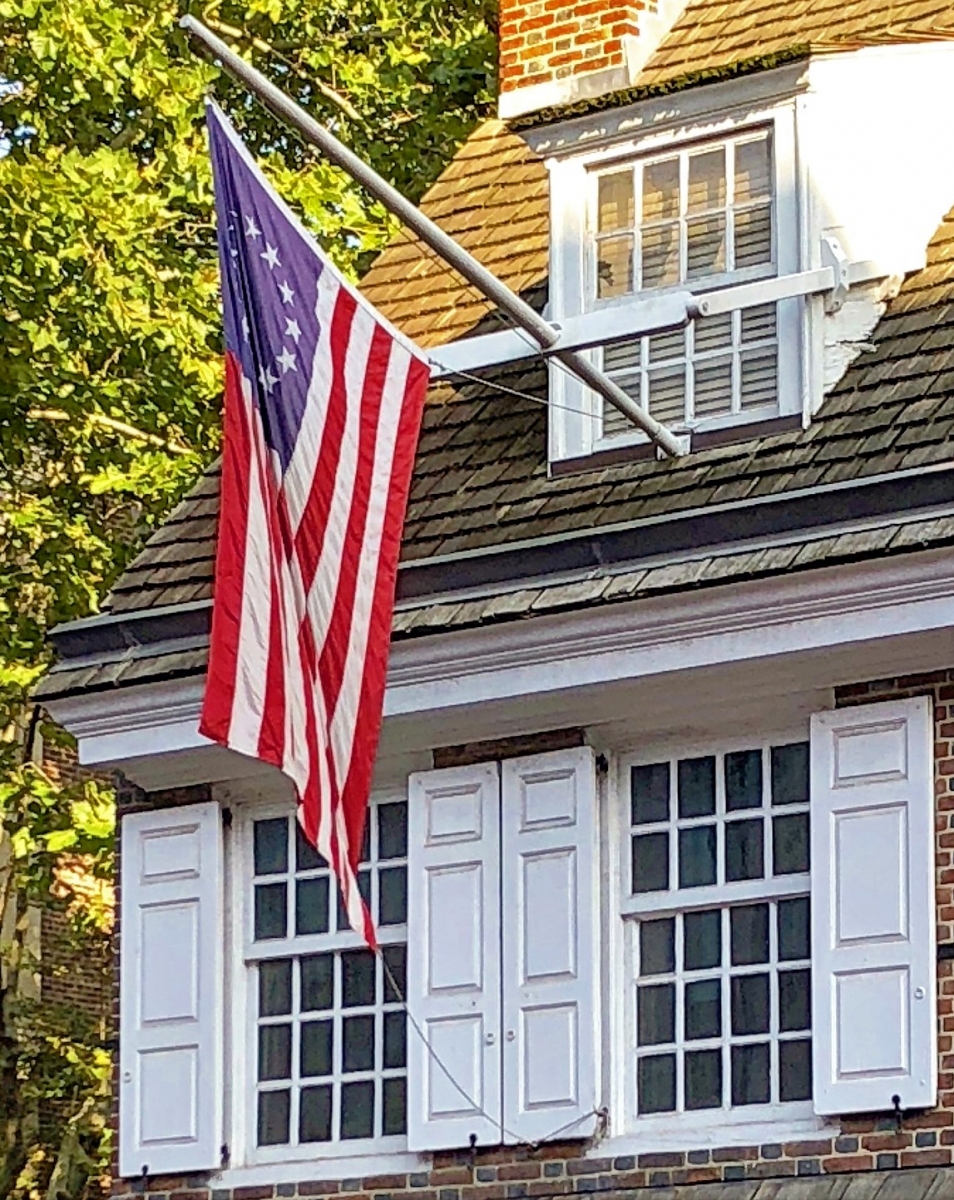The Betsy Ross House, Birthplace of the American Flag
Related Posts
- Buy Tickets for The Constitutional Walking Tour of Philadelphia – See 20+ Sites on a Primary Overview of Independence Park, including the Liberty Bell and Independence Hall
- Independence Hall Tickets & Visitor Guide
- Christ Church - "The Nation's Church"

The Betsy Ross House
The Betsy Ross House is the location where Elizabeth ("Betsy") Griscom (1752-1836) and her first husband, John Ross (1752-1776), opened their upholstery shop. Betsy and John never actually owned the house since they rented the space on the first floor for their upholstery shop. After John's untimely death in 1776, Betsy would continue to operate her upholstery shop at that same location. At some point after John’s death, Betsy also rented a room above her shop in which she would live. It is believed that it was in her bedroom that Betsy made the first American flag in privacy since she was worried of the possible consequences of working on the flag out in the open in her shop.
The Betsy Ross House was originally constructed around 1740. Over the years, the house changed in appearance, but it has been preserved. In 1891, Ross’ 2nd youngest daughter Rachel confirmed the location of the Betsy Ross House:
“[The house in which my mother made the flag] was on the north side of Arch Street, a few doors below Third Street, above Bread Street, a two story house, with attic and a dormer window, now standing, the only one of the row left, the old number being 89; it was formerly occupied by Daniel Niles, shoemaker. Mother at first lived at the house next east, and when the war came, she moved into the house of Daniel Niles.”
In 1937, Atwater Kent, a wealthy Philadelphia Radio magnate, restored the Betsy Ross House. Many original details dating back to the time of Betsy Ross were still there and in instances where original elements had been replaced by more modern elements, period materials from other houses that dated to the same era were used in an effort to make the Betsy Ross House authentically look exactly as it did in the time of Betsy Ross. A neighboring building was demolished to create a courtyard where the remains of Betsy and her third husband, John Claypoole (1752-1817), are now interred. An additional building was constructed in the rear of the courtyard using period bricks, and that structure is the Welcome Center, Ticket Box Office and Gift Shop. The house and courtyard was subsequently donated to the City of Philadelphia.
Visiting the Betsy Ross House
Today, the Betsy Ross House is open to the public to view for a small admission fee. You can purchase tickets online, or you can purchase them the day of your visit in the Welcome Center and Gift Shop located in the rear of the courtyard next to the Betsy Ross House. You can take the self-guided tour of the Betsy Ross House, and you can also purchase an audio tour for an enhanced visitor experience. There is even an audio tour for kids. Inside, you can see very interesting historical exhibits including the family Bible and snuff box. The Betsy Ross House also offers reduced fees for groups of 20 or more people.
On The Constitutional Walking Tour of Philadelphia, we visit the Betsy Ross House on every tour, and guests will have the chance to see the courtyard and the Betsy Ross grave.
Often times, there is a reenactor portraying Betsy Ross inside the Betsy Ross House, and you can watch her work and ask her questions. The Betsy Ross reenactor also does a small sewing demonstration.
Going inside the house is remarkable not just because Betsy Ross lived there, but because of how interesting it is to step back in time and go inside of an early 18th Century working class house. While Philadelphia has many preserved houses from this era, many of those houses belonged to the wealthy and thus bare little resemblance to the Betsy Ross House. With its very low ceilings and an incredibly narrow winding staircase, the Betsy Rosse House really shows visitors what it was like for regular people to live in this time with tiny rooms and tight staircases.
If you don’t want to go inside the Betsy Ross House, you can just visit the outdoor Courtyard, and there is no admission charge for that. The Courtyard is the final resting place of Betsy Ross and her third husband, John Claypoole. Plus, the Gift Shop is great with lots of memorabilia and souvenirs, including Colonial Flags.

The Story of the First Flag
According to the story that was passed down through her family, Betsy Ross sewed the first American Flag. It is said that George Washington, then the Commander in Chief of the Continental Army visited Betsy Ross’ upholstery shop in 1776 in order to request the flag. Washington was accompanied by Robert Morris and George Ross (who was the Uncle of Betsy’s late first husband.) While Betsy is often depicted as an older woman sewing the flag, Betsy would have been only 24 years old at the time she created the famous stars and stripes. According to legend, Betsy not only sewed the first flag but also helped to design it. It is said that Betsy was presented with a depiction of the flag which Washington wanted featuring thirteen red and white stripes and thirteen six-pointed stars. Betsy apparently convinced Washington that a five-pointed star would be much easier and faster to cut.

The flag that Betsy Ross is said to have sewn looked much like the American flag today with thirteen stripes using red and white in alternating rows, with white stars in a field of blue in the upper left corner. The Ross flag however only had 13 stars arranged in a circle as opposed to the 50 stars the the American flag has today. The 13 stars and stripes in the Ross flag represented the 13 states in the United States of America at the time. Today, the 50 stars in the American flag still represent each state, but the flag still has 13 red and white stripes to pay tribute to the original 13 states.
By the turn of the 20th Century, the story of Betsy Ross was very well known across the United States of America. As historians investigated the authenticity of Betsy Ross story, they found there was no written record of the story by her family until Betsy’s grandson, William, wrote about the story in the 1870s, a century after the events are said to have taken place. Continued research could not find any written records before the 1870s that proved Ross sewed the first flag. At the same time though, no information has ever been discovered that disproves the Betsy Ross story. While researchers could never prove or disprove the Betsy Ross story, along the way they arguably made Betsy the most thoroughly researched working class female of the Revolutionary Era and uncovered many incredible aspects of her life including the numerous sacrifices that she and made for America.
Betsy’s story became incredibly popular in the United States around the time of the Centennial Celebration in 1876 which took place in Philadelphia 100 years after the signing of The Declaration of Independence. Americans were becoming very interested in their country's history, and many found the story of Betsy fascinating. Today, Betsy Ross is recognized as a sort of “Founding Mother” and the Matriarch of the American Revolution.

Betsy Ross' Personal Life
Betsy was born Elizabeth Griscom, and she was raised as a Quaker in Philadelphia. Just like another very famous Philadelphian named Benjamin Franklin, Betsy was one of 17 children (interestingly Ross also lived to 84 years old, the same age as Benjamin Franklin). As a teenager, Betsy was apprenticed to an upholster named William Webster. While Ross worked for Webster, she fell in love with another apprentice named John Ross. After a short time, Betsy and John eloped in Gloucester City, New Jersey.
Because John Ross was not a Quaker, the marriage was not approved of by Betsy’s family, and Betsy would be expelled from her Quaker Congregation. Betsy would begin worshipping with John and his family at Christ Church. When the Revolutionary War started two years after their marriage, John would participate as a member of the Pennsylvania Militia. Unfortunately, John died early in the American Revolution in 1776 while guarding a munitions stockpile that exploded. Betsy and John Ross had no children before John died.
A year later, Betsy married her second husband, Joseph Ashburn (DOB?-1782), with whom she had two daughters. Ashburn was a sailor, and his ship would be captured by the British Royal Navy a few years later. Ashburn would unfortunately die in British custody in 1782.
Three years after Ashburn’s death, Betsy married her third husband, John Claypoole (1752-1817), who had met Ashburn while he was a prisoner of war. It was Claypoole who informed Ross of her second husband’s death. Ross would go on to have an additional five daughters with Claypoole before he eventually died as well. All the while, Ross continue to operate her upholstery shop. This continued until Betsy eventually went blind in old age and then died in 1836, having never been famous in her own lifetime.
Betsy Ross’ Contributions to the American Revolution
In addition to Betsy losing her first two husbands to the American Revolution, she also risked her own life by frequently working for the newly formed American Government and many of its military branches during the American Revolution, actions the British would have viewed as treasonous and punishable by death. While no records have been found to prove that Betsy sewed the first American flag, there is written documentation that Ross worked for the Continental Army. Ross worked for the Army producing tents and blankets, and she stuffed paper tube cartridges that contained musket balls and prepared packed ammunition. Additionally, there are records that Betsy worked for the Pennsylvania Navy and produced flags for their naval ships.
Ross was a skilled upholster with many government contracts, including contracts for the American Continental Army and contracts to produce flags. Additionally, the uncle of her late husband signed The Declaration of Independence and, she attended Christ Church, the same church George Washington attended while in Philadelphia. Even without contemporary written proof, you can see why so many people find the Betsy Ross story so believable and view her greatest contribution to American Revolution to be sewing the first American flag.
Hours
Daily from 10AM-5PM
There are extended hours from June through September when the Betsy Ross House does not close until 6PM. Additionally, from December through February the Betsy Ross House is closed on Mondays.
Additional Information
The Betsy Ross House
239 Arch Street
Philadelphia, PA 19106
215.686.1252



